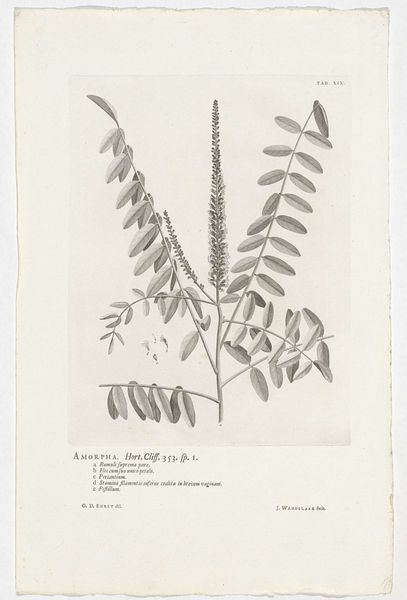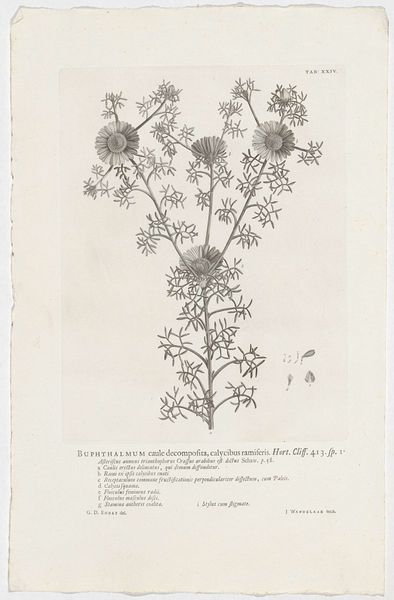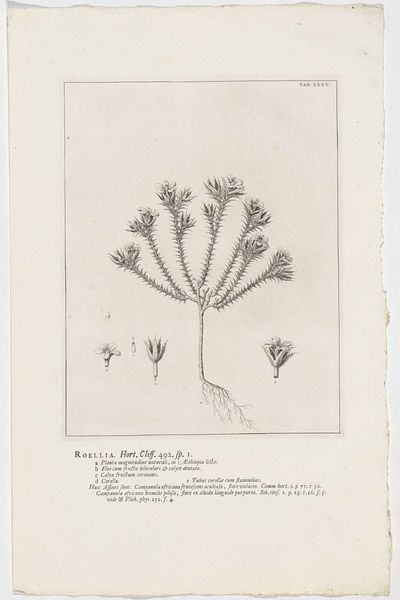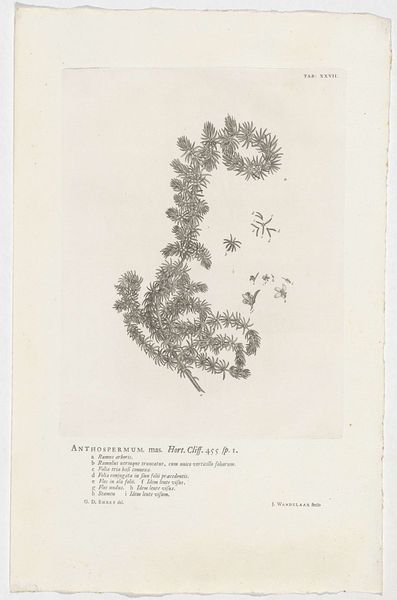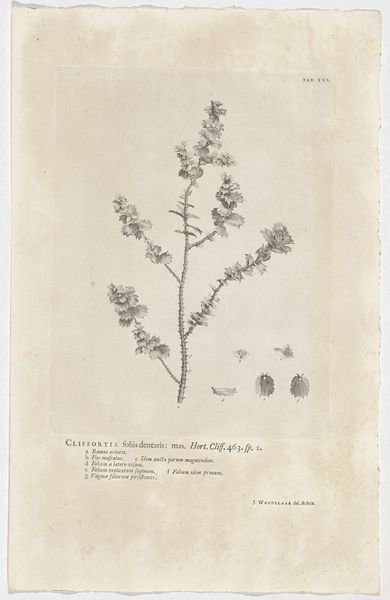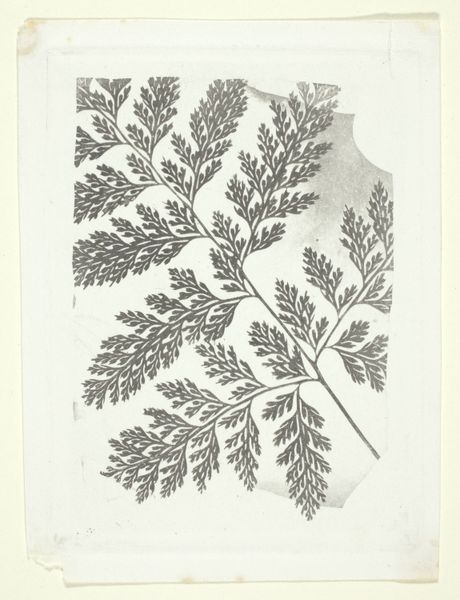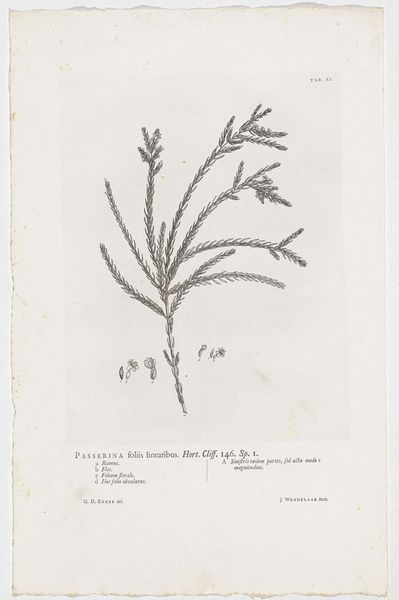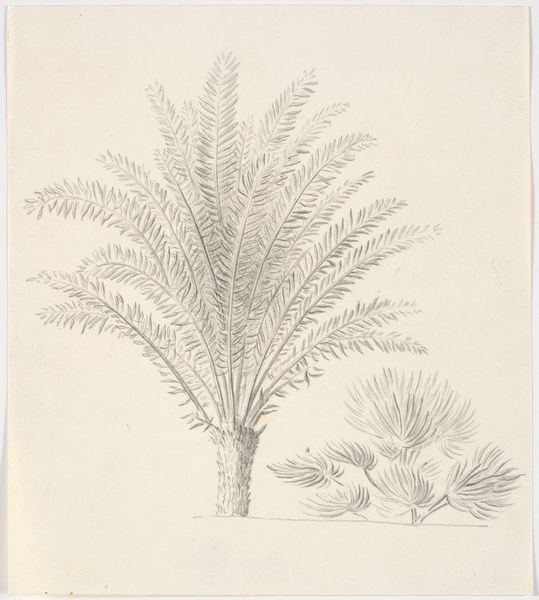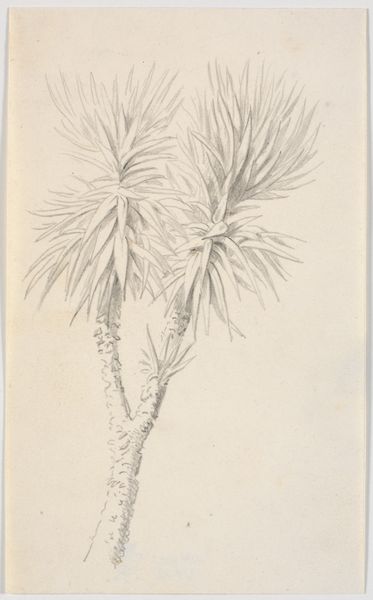
drawing, print, paper, engraving
#
drawing
# print
#
old engraving style
#
flower
#
paper
#
plant
#
engraving
Dimensions: height 292 mm, width 223 mm
Copyright: Rijks Museum: Open Domain
Curator: This captivating botanical illustration, "Dalea alopecuroides," was crafted by Jan Wandelaar in 1738. The artwork is preserved in the Rijksmuseum's collection, and is a striking engraving, offering detailed observation of the plant. Editor: There's a fragility in its delicate lines and subtle tonal shifts, something quietly elegant about the presentation. I find myself wanting to understand the type of paper that the print sits on – the means through which Wandelaar depicted the plant. Curator: That sense of delicacy reflects Wandelaar’s training in both art and science. His background profoundly shaped his artistic lens. We see his deep engagement with Linnaean taxonomy and 18th century botany manifest not just in this but in his contributions to scientific publications, underscoring the intertwined relationship between art, science, and colonial projects of understanding the natural world during the Enlightenment. Editor: Exactly. The meticulous technique speaks volumes. Consider the labor that went into the process of engraving the details. It elevates what might have just been a study of natural history into an object reflecting not just skilled artisan work but systems of production tied up in the market for images and ideas about nature. Curator: I agree entirely. Furthermore, the scientific pursuit of cataloging and illustrating nature has deep roots in colonialism and imperialism. Plants like the Dalea, named in the language of scientific rationalism, existed within indigenous knowledge systems that colonization sought to erase. Editor: And the use of paper adds to the story. What type? How was it manufactured? Was the creation of the print meant to circulate in certain social or economic circles? I find the material of this print underscores how representations of nature are intrinsically connected to human endeavors, industry and extraction. Curator: Your perspective is important. Considering Wandelaar's engraving with attention to the materials reminds us how Enlightenment science and art co-evolved with social, economic and environmental changes wrought by burgeoning global capitalism. Editor: Ultimately, examining "Dalea alopecuroides" reveals the physical components of the piece which brings context and nuance. Curator: I leave feeling deeply informed by looking beyond the surface appearance into these fascinating dialogues.
Comments
No comments
Be the first to comment and join the conversation on the ultimate creative platform.
